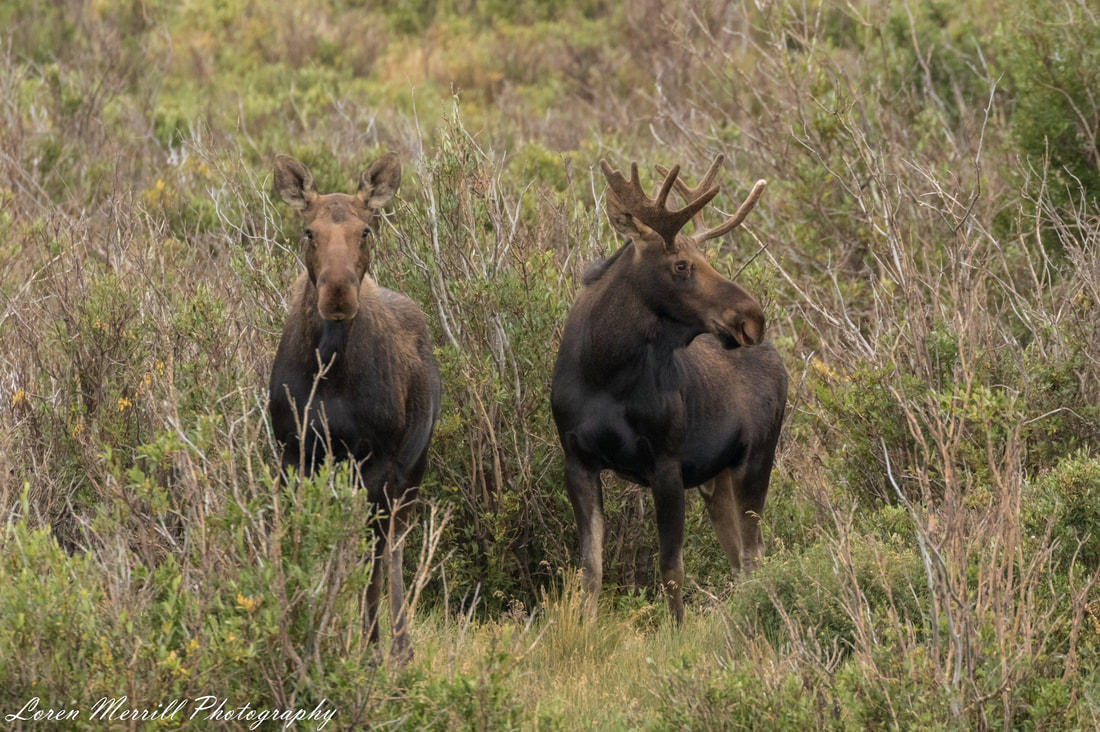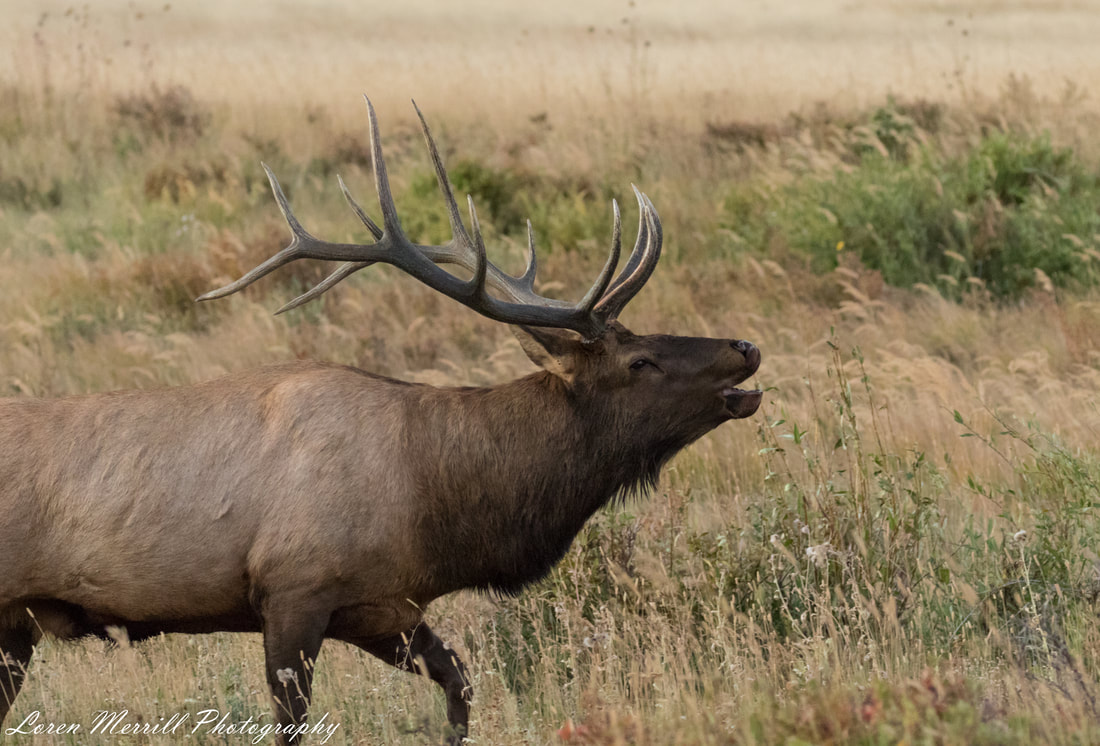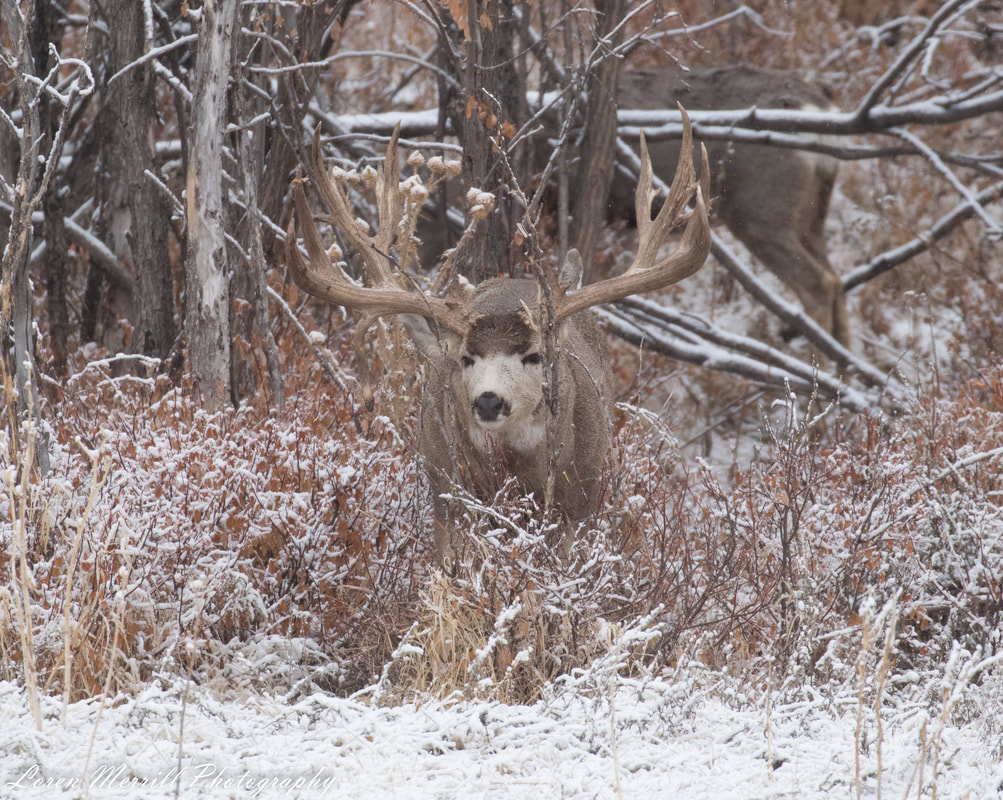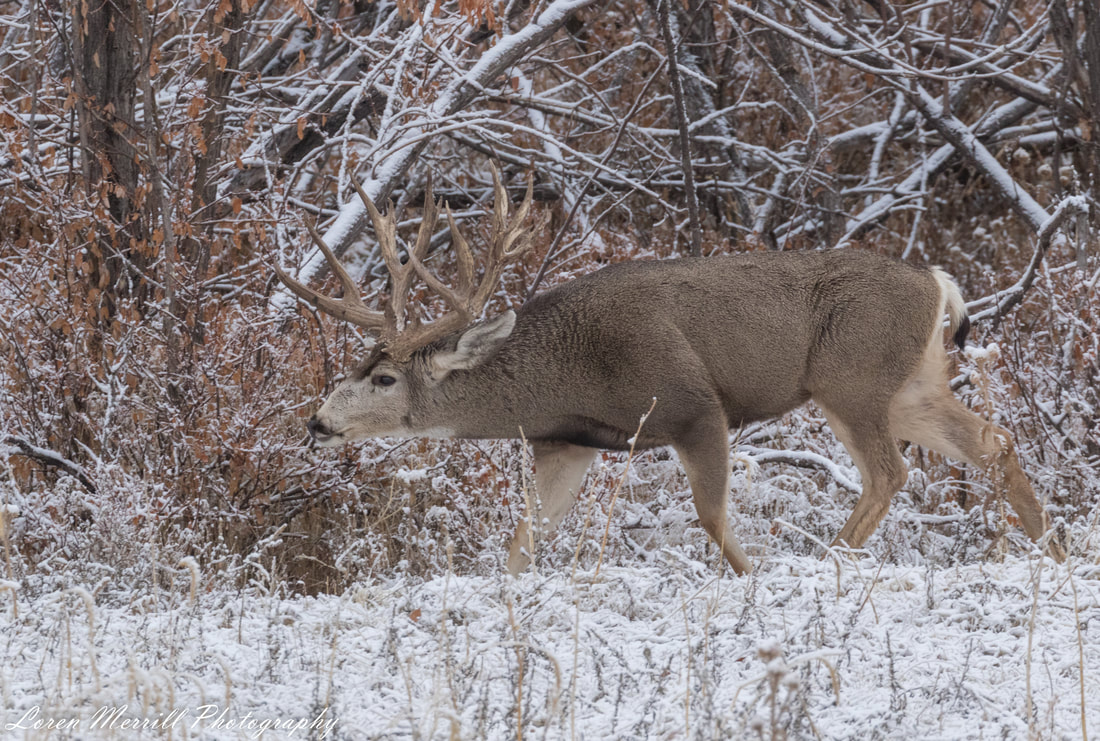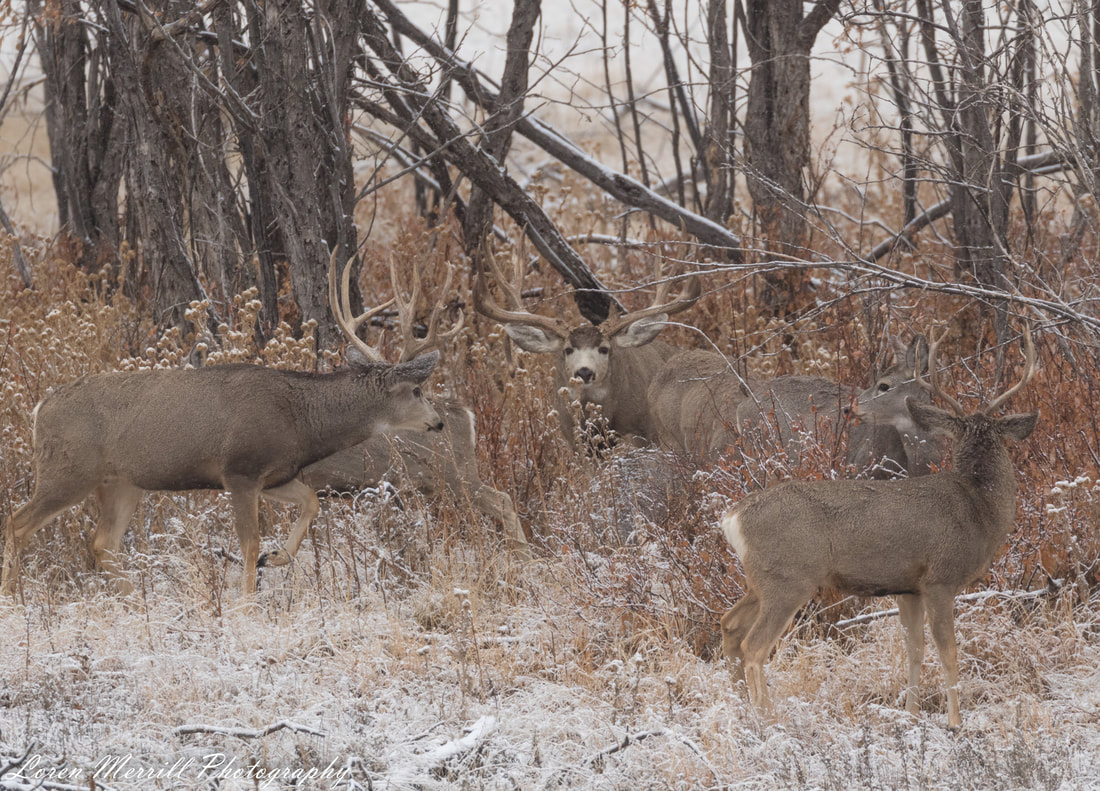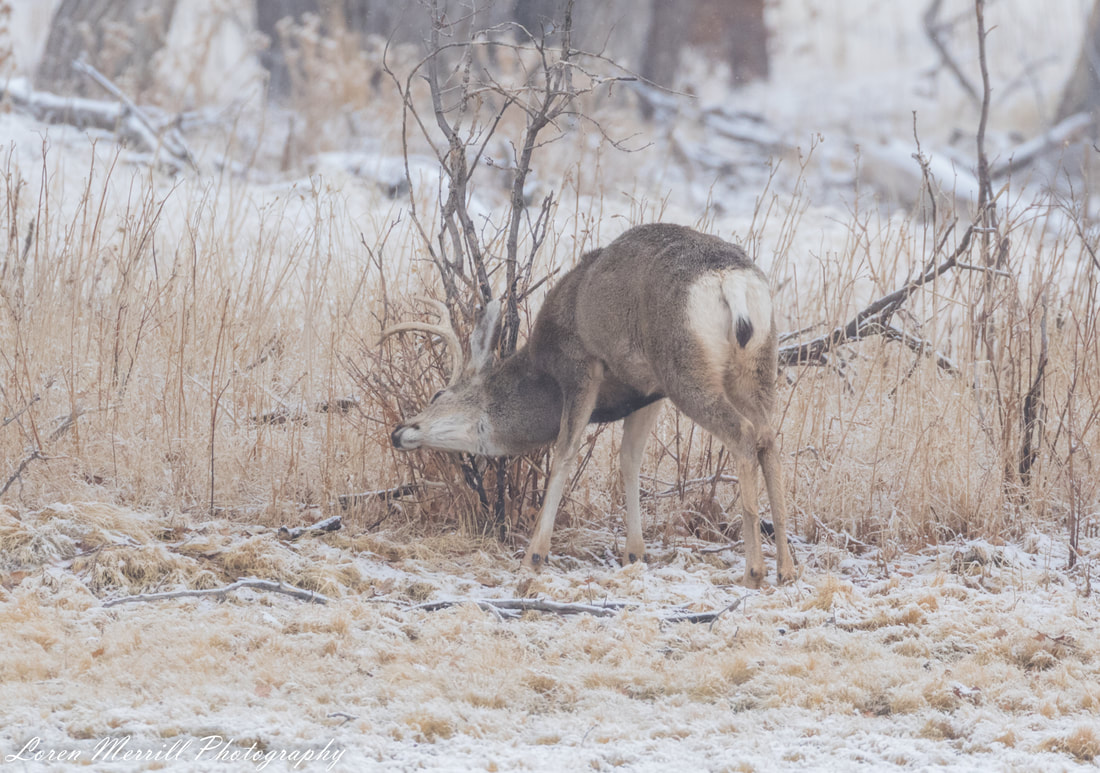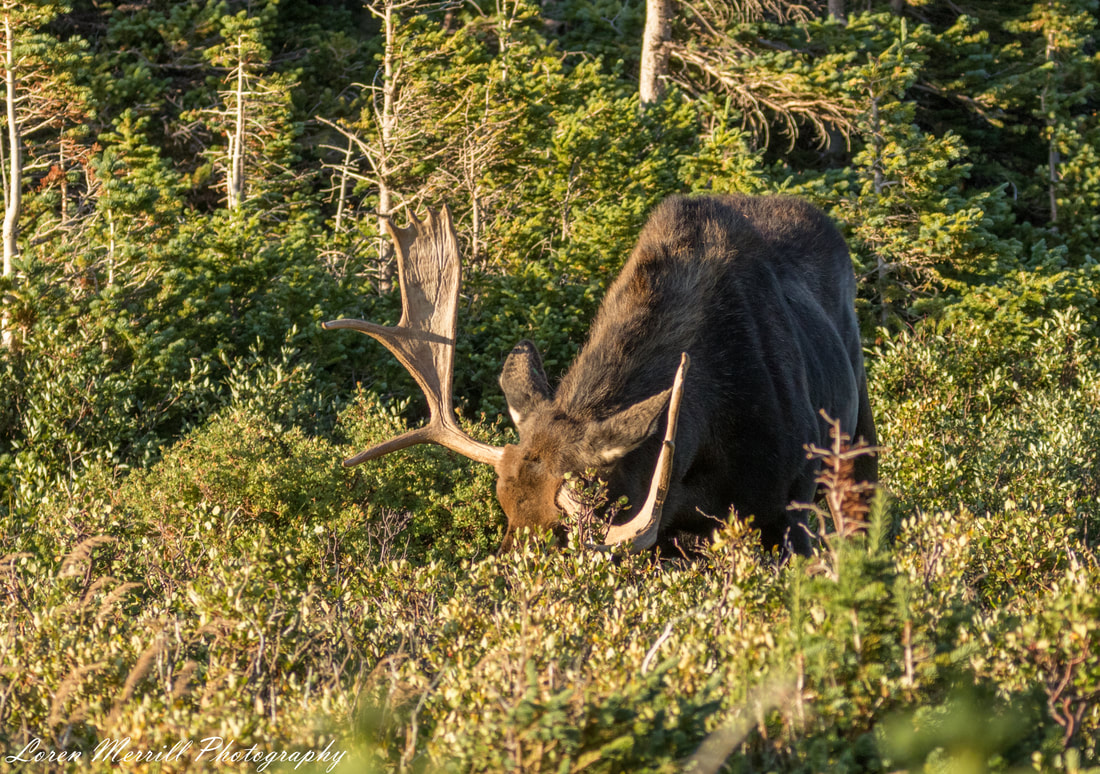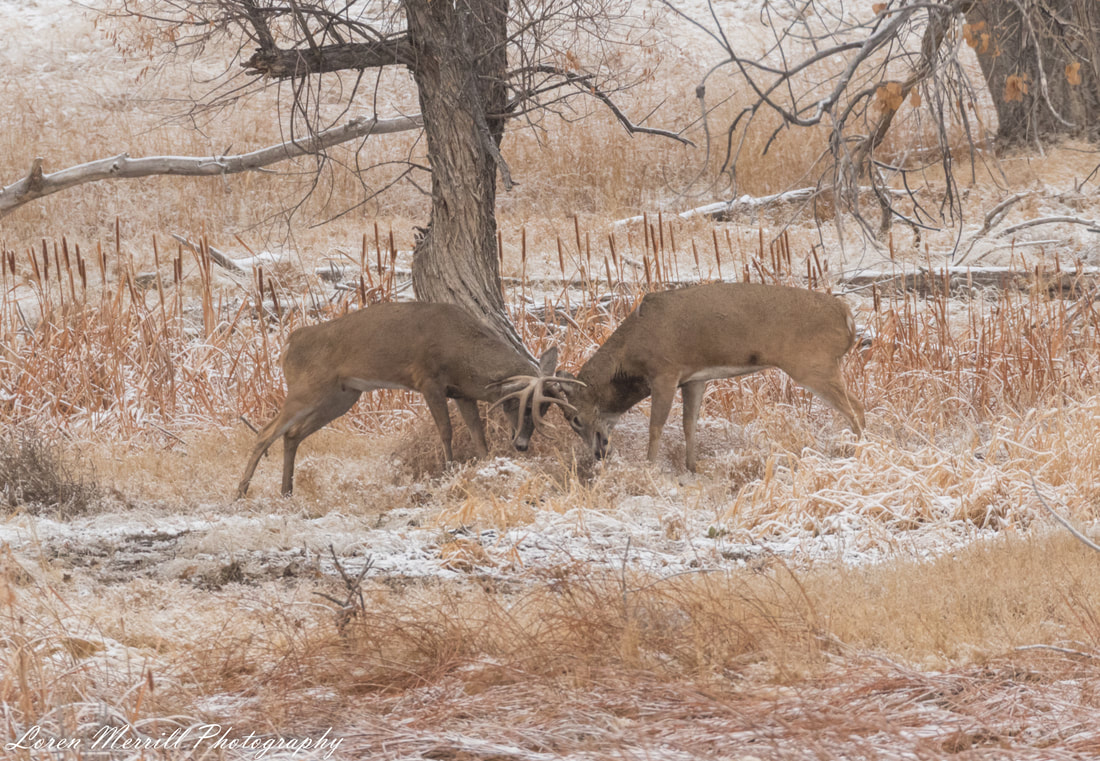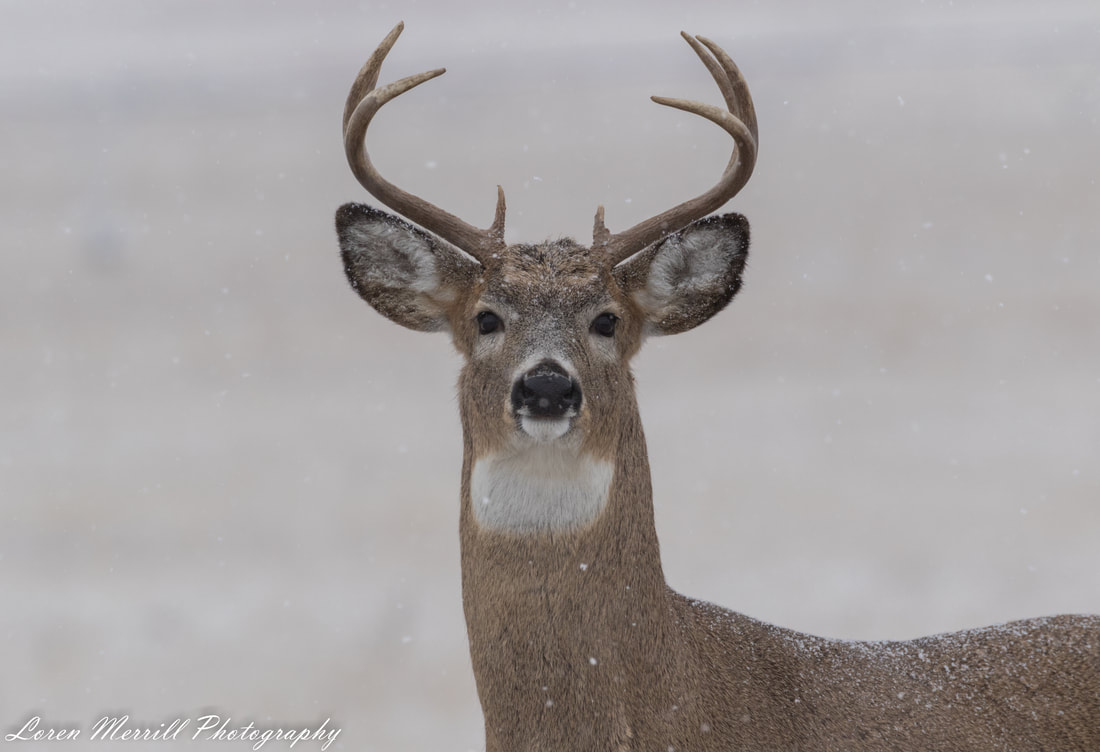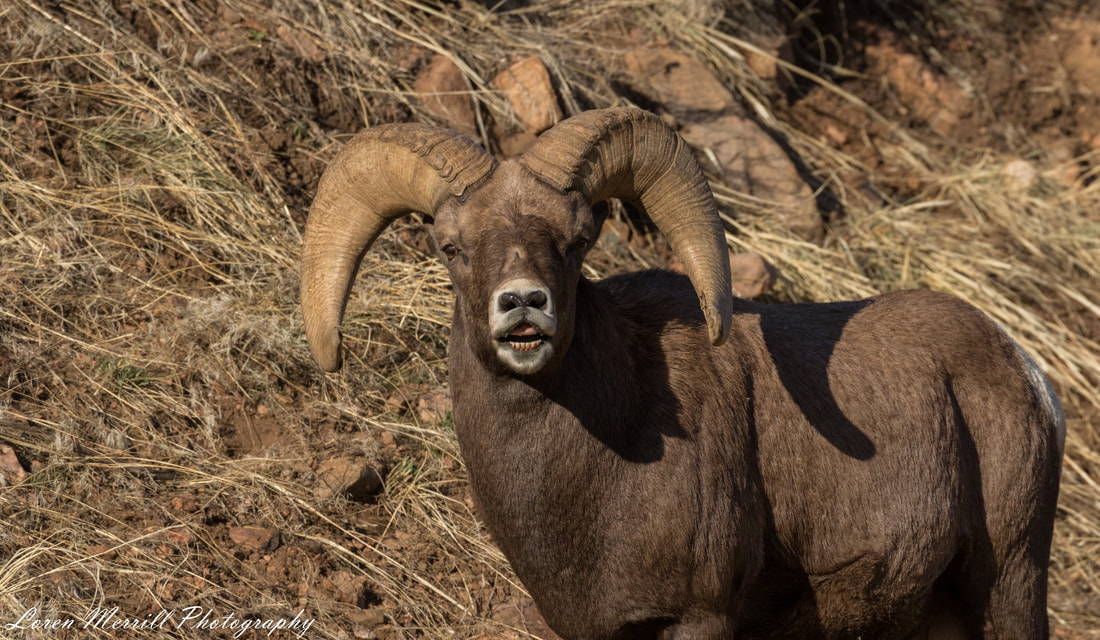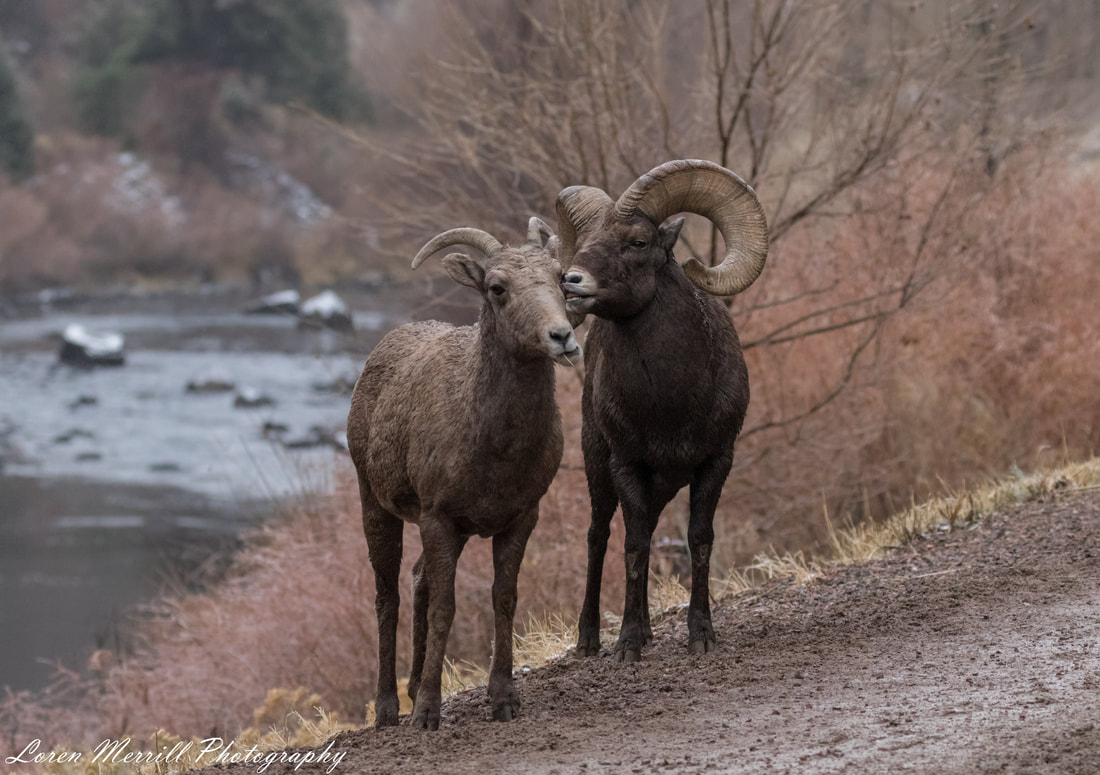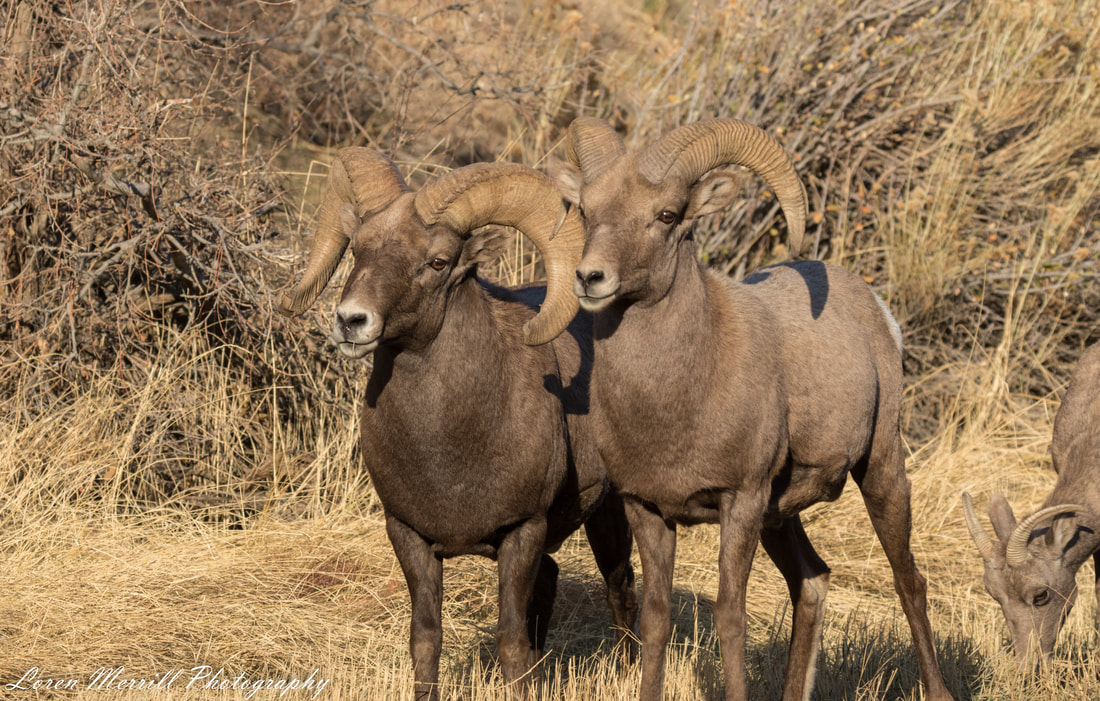|
It feels as though we somehow missed autumn this year. The early killing frost and the numerous snows transformed the late summer landscape into a winterscape months ago. But while the weather says winter, there are still hints of fall if you know where to look… Animals’ annual rhythms are often tied to circadian or lunar cycles rather than changes in the weather, and the mating patterns of many of our large mammals fall into that category. For the deer, antelope, sheep and goats of North America, the period of greatest mating activity generally occurs in the fall. The timing and duration of the mating season, or “the rut,” varies from species to species, with elk (or Wapati) often initiating mating activities in early September and wrapping up by early November, while white-tailed and mule deer typically don’t begin their rut until November, and can continue until February. Rutting behavior is composed of a rich milieu of visual, chemical, and acoustic signals, and occasionally physical contests. Most mammals do the bulk of their communicating through chemical signals; scent glands and urine excretions exude a complex array of volatile compounds that convey information regarding an individual’s current physiological and reproductive condition. And during the rut, the most important information that individuals hope to glean from these messages is related to circulating levels of testosterone (in males) and estrogen (in females). Males spend a lot of time following females tasting the air and urine samples to assess where in the estrous cycle females are. Females of some species like moose also spend time assessing male condition and will roll in the urine-soaked wallow of a male that she finds particularly attractive. She will also defend a wallow from other females in an attempt to ensure that she is the only one sporting that male’s distinct eau de toilette (literally in this case). In addition to using chemical signals, male elk bugle during the rut. These loud vocals (which can be heard from miles away) start off as deep, throaty moans that seemingly befit such majestic animals, before rapidly turning into high-pitched squeals one might associate with a more porcine animal, or perhaps even the Nazgul from Lord of the Rings. Moose also communicate using a series of quiet grunts and moans, although their vocals are not meant to travel long distances like those of the elk. These forms of chemical and acoustic communication are important for determining the outcome of interactions between individuals during the rut, but when males are sorting out who is dominant to whom, occasionally two males meet that are similar in physical stature, social status, and condition. In these cases dominance can only be established one way; by physical combat. And these were the sorts of interactions I was after this fall. A few weeks back, I stopped at the Rocky Mountain Arsenal National Wildlife Refuge in the hopes of seeing some rutting action among the white-tailed and mule deer that reside there. This refuge, which is located on the outskirts of Denver, was once home to a chemical weapons manufacturing facility, and later was the site of agricultural chemical production. These activities resulted in heavy contamination of the local landscape, and prompted the area to be designated as a Superfund site. Decades of cleanup have transformed the area into one of the premier and largest urban refuges in the country. Herds of deer roam the 15,000 acre refuge, and my goal was to capture some of the mating activities with my camera. Periodic bands of snow and sleet swept across the refuge that morning, and during one of the heaviest bands, I came upon a large herd gathered on the side of the road. This herd was a little different, however, in that each member was bestowed not with antlers, but with other appendages—large cameras. It didn’t take long for me to divine what had caused this gathering; a herd of mule deer was clustered in and around a patch of shrubby vegetation on the other side of a small wetland, and within that herd was the largest buck I have ever seen. His head was crowned with an enormous rack of antlers, and he was clearly the alpha male of the herd. He meandered in and out of the vegetation honing in on each female that came within close proximity. He sampled the air with his mouth and nose, picking up the chemical compounds that provided clues into the does’ reproductive state. A doe typically is receptive for only a day or two, so bucks must remain attentive and vigilant if they hope to successfully breed. A number of other males were present, including some very large individuals endowed with impressive antlers of their own, but all these males were smaller and subordinate to the dominant male. They also pursued females, but whenever the alpha male was nearby, they made sure to give him a wide berth. After a rebuff from a female, one of the beta males went over to a clustering of small trees and began thrashing them with his antlers. This behavior is quite common prior to and during the rut, and serves a number of functions. When the velvet that encases antlers during the antler growing period begins to come off, males rub their antlers against branches to help remove this soft outer coating. Males also go on the offensive against unlucky trees and shrubs in a show of strength, demonstrating their superiority over the immobile and hapless willows and alders that often bear the brunt of these displays. These demonstrations are often directed at other males or nearby females, but I have also been the target of these exhibitions from bull moose that wanted to be sure I was clear on where I stood in the social hierarchy; below them. Deer have scent glands on their head, and it is thought that this rubbing is a form of territory marking. Finally, it is likely that these activities help vent some testosterone-induced steam from frustrated males. After watching the bucks unsuccessfully pursue the does through the sleet and snow until my hands were numb, I returned to my car and continued further into the refuge. Smaller groups of deer, both mule and white-tailed, dotted the rolling landscape, but none seemed to be engaged in any obvious rutting behaviors. None, that is, until I passed through a large riparian zone and found a pair of white-tailed deer bucks locked in combat in the open understory. After a short bout of pushing, the two stopped and stood motionless, heads down, antlers intertwined, and mouths open as they sucked in air. The only thing that gave away the ongoing tension between them was the taut muscles in their hind legs, belying the pressure each was applying. They remained this way for a few minutes, until one of the bucks, perhaps sensing a hint of give in his opponent, pressed forward. This set off a short flurry of action, in which they strained against one another, with one gaining the upper hand and pushing the other backwards. They again paused for a few minutes, and when they resumed the advantage shifted to the male who had been pushed backwards; he now pushed the other male around. They danced among the cottonwood trunks in this manner for 30 or 40 minutes, during which time they caught the attention of another buck and a handful of does. The new buck looked as though he wanted to join the fray, but there was no opening, so he remained on the periphery. The presence of the viewers had elevated the stakes, and the two fighting bucks now went all out, crashing through the brush and careening around the open spaces between the trees. When they finally came apart, I realized that one of the bucks had only one antler, and he appeared to be the victor. But rather than attend to the does in the area or face the new buck, he began slowly plodding after the apparent loser, who was headed east and away from the fray. The two bucks were exhausted and walked with their mouths open. They continued away from the battleground, and upon turning my attention from them to the hopeful interloper and the small band of does, I was surprised to see the new male attempt to mate with one of the does, who then obliged. Apparently, this buck had already established his position as a harem leader and it felt a little as though he were rubbing this in the faces of the two battle-weary bucks. When I left, the two fighters were still walking east, slowly, and the harem leader was making advances towards a different doe. I left the refuge a little while later, and headed south to Waterton Canyon, where I hoped to capture some different rutting behavior. Over the past many millennia, the South Platte River has etched its way through soil and rock, carving out a canyon that is now home to healthy herds of bighorn sheep. These sheep spend much of their time on the steep canyon slopes, but come down to the river and the dirt road that follows the river, to drink and graze. And during the rut, this is also the area where they engage in many of their mating behaviors. Like the deer, male bighorns spend a lot of time following females around with their mouths partly open and their heads tilted back as they try to gauge the females’ level of receptivity from pheromones released by the females. In a fascinating twist, and one that caught me off-guard, males will kick females if the females don’t seem to be interested in their advances. Usually it’s a quick kick with a forelimb to the female’s stomach or hindlimbs. I’m not clear on the message this is meant to convey, other than the obvious sign of annoyance, but the kicking never seemed to induce a female to reconsider her position towards the male. As interesting as these behaviors are, I was after the big prize; the head-smashing battles between males. Male bighorn sheep grow large, curled horns that they use as a battering ram in contests with other males. These battles often take on the form of a duel. First, two males will size each other up, then they’ll walk away from one another before turning around and running at the other combatant (often on their hind legs) before slamming their heads together. Their horns, which grow continuously for the duration of the sheep’s life, can reach weights of 30 lbs (per pair). In addition to the padding provided by the slightly flexible horns, bighorn sheep also have extra sutures in their skull which are thought to help distribute and absorb the pressure created by the impact of hitting heir heads together at 40mph; pressure which is thought to top 500Gs, or 60 times what the human skull could take before cracking open. Occasionally, these duels are intercepted by a third ram, who will take advantage of the other rams’ focused concentration to batter one of the primary combatants in the side. You can see why this is something I wanted to witness firsthand. Unfortunately, as with my previous and subsequent trips, I struck out on seeing the males engage in any competitive behavior. I saw some play head-butting between young sheep, and I heard one clash between rams, but that was the extent of the agonistic behavior. This has become a familiar situation for me. At the start of the fall I had high hopes of capturing battles between elk, moose, bighorn, and deer (separately of course; not all together in some multi-species battle royal, although that would be worth a blog or two), but these events are not common, and combatants are already putting themselves at risk during these contests without doing so in front of a potential predator. And now that the rut is close to an end or over for many of these species, I will likely have to wait until next fall to have any chance of seeing these males compete for supremacy.
Next post: TBD Subscribe to the Newsletter: If you would like to get notifications about when new posts are up and other tidbits related to the blog, sign up for the View Out the Door weekly newsletter. Just email viewoutthedoor “at” gmail “dot” com with the subject header SUBSCRIBE.
0 Comments
Leave a Reply. |
About the author:Loren grew up in the wilds of Boston, Massachusetts, and honed his natural history skills in the urban backyard. He attended Cornell University for his undergraduate degree in Natural Resources, and received his PhD in Ecology from the University of California, Santa Barbara. He has traveled extensively, and in the past few years has developed an affliction for wildlife photography. Archives:
|

